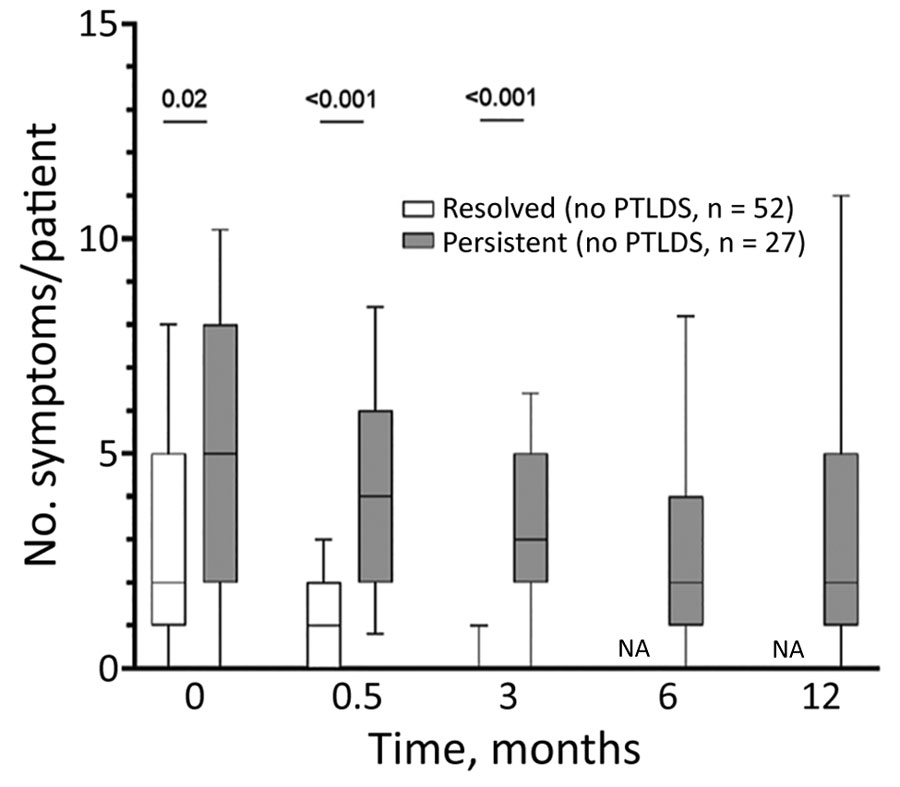Volume 29, Number 6—June 2023
Synopsis
Association of Persistent Symptoms after Lyme Neuroborreliosis and Increased Levels of Interferon-α in Blood
Figure 1

Figure 1. Individual frequency of each symptom at each follow-up timepoint in study of association of persistent symptoms after Lyme neuroborreliosis and increased levels of interferon-α in blood among patients in Slovenia. Data in patients whose symptoms resolved are shown in the left graph and in those with persistent symptoms in the right graph. Red stars indicate symptoms that occurred at significantly higher frequency in the persistent group compared with the resolved group. p values were calculated using nonparametric Mann-Whitney rank sum tests; p<0.05 was considered statistically significant. T, timepoint (0 indicates baseline).
Page created: March 23, 2023
Page updated: May 17, 2023
Page reviewed: May 17, 2023
The conclusions, findings, and opinions expressed by authors contributing to this journal do not necessarily reflect the official position of the U.S. Department of Health and Human Services, the Public Health Service, the Centers for Disease Control and Prevention, or the authors' affiliated institutions. Use of trade names is for identification only and does not imply endorsement by any of the groups named above.